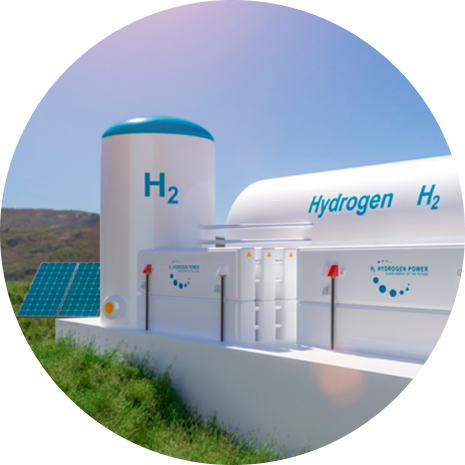




Hydrogen is a key element in the energy transition due to its great potential to help decarbonise the economy and reduce fossil fuel imports, enabling a higher penetration of renewable energy into the energy mix and a large contribution to circular economy.
Thanks to the potential applications of hydrogen in basic sectors such as energy, industry and transport, it will become a key element in the global economy over the next few decades, as countries work to reduce greenhouse gas emissions as per the Paris Agreement in line with the EU’s pledges to achieve carbon neutrality by 2050.
Various national and international organisations are reviewing and adapting their strategies and initiatives aimed at increasing the penetration and use of hydrogen in our different economic sectors.


Within the framework of the European Green Deal and regarding the “New Industrial Strategy for Europe” and its recovery plan.
6 GW of renewable H2 produced by electrolysis in the European Union by 2024; and 40 GW of renewable H2 by 2030. Additional R&D&I efforts are also required to this end.

The result of the participation of various economic agents, administrations and citizens who have made their contributions, especially through the proposal of numerous innovative projects.
By 2030 4 GW of hydrogen produced by electrolysis, minimum contribution of 25% of renewable hydrogen to industry, creation of a Hydrogen Refuelling Station network, bus fleet, light vehicles, etc.

Establish quantitative targets for 2030 to monitor the degree of development of the local hydrogen market.
To promote the creation of an H2 ecosystem based on the production of renewable H2 and on infrastructure that supports the local market and provides a base to establish a leading international logistics centre.
However, practically all the hydrogen currently produced globally comes from fossil fuels: natural gas reforming or coal gasification. These hydrogen-generating processes produce carbon dioxide as a by-product.
In this context, which is favourable to the development and implementation of hydrogen technologies, as mentioned above, it is necessary to develop innovative technologies generating green hydrogen which:
minimise costs
Reduce CO2 emissions and the use of critical materials
improve the output of the hydrogen production process compared to current technologies
Get to know the Basque Country's scientific-technological capabilities.